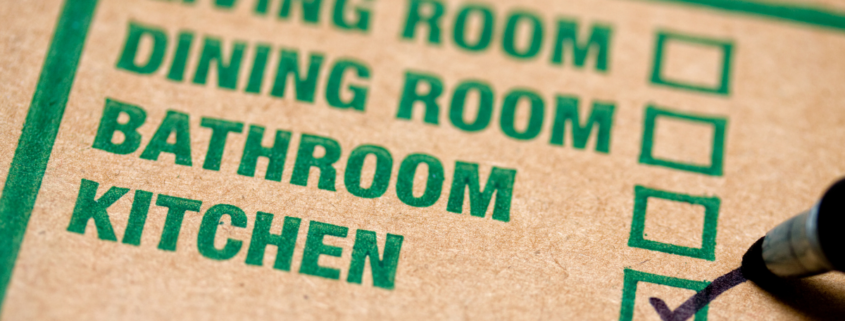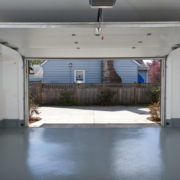How to Move: The Ultimate Guide to Moving Boxes and Supplies
Planning a move? Whether it’s across town or across the country, you’ll need to pack up your belongings and transport them to your new home. The process can be daunting, but don’t worry – we’re here to help! In this guide, we’ll discuss everything you need to know about moving boxes and supplies. We’ll also provide tips for packing and transporting your belongings safely and efficiently. Let’s get started!
First, you’ll need to decide what type of moving boxes to use. There are a variety of options available, including standard cardboard boxes, plastic crates, and reusable moving containers. Which type of box is best for you will depend on your needs and budget.
What Types of Moving Boxes Are There?
There are several different types and sizes of moving boxes available on the market, and each has its own set of benefits and drawbacks. The most common types of moving boxes and containers are:
– Cardboard Boxes (S, M, L, XL, Corrugated)
Cardboard boxes are the most popular type of moving box because they’re lightweight and easy to store. They’re also relatively cheap and can be recycled or reused after your move. However, cardboard is prone to damage if it gets wet or is stacked too high.
– Plastic Bins
Plastic bins are a good option for fragile items, as they offer extra protection from bumps and falls. They’re also waterproof and can be easily cleaned if necessary. However, plastic bins can be heavy and take up a lot of space, so they’re not ideal for large items.
– U-BOX Containers
U-Box containers are a great option for anyone who wants flexibility during their upcoming move. With U-Box containers, you have the option to pack and store your belongings at your own pace, which is perfect for anyone who isn’t sure where they’ll end up. Plus, U-Box containers are a great way to save money on your move, since you only pay for the amount of space you use. For more information about U-Box containers, visit https://www.uhaul.com/UBox/.
Moving Box Sizes
When choosing moving boxes, it’s important to consider the size and weight of the items you plan to pack. Boxes that are too small or too large will be difficult to handle and may end up getting damaged during transit.
Here are some general guidelines for choosing the right box size:
– Small boxes: ideal for lightweight items such as clothes, linens, and books
– Medium boxes: ideal for heavier items such as pots and pans, toys, and canned food
– Large and XL boxes: ideal for a variety of items, including furniture pieces
– Wardrobe boxes: Wardrobe boxes provide an excellent way for packing and storing clothes while moving, wardrobes are typically large enough to hold hanging clothes as well as loose linens or blankets for storage purposes during your move.
– Picture boxes: Picture boxes are perfect for transporting your artwork, framed family portraits, and kids’ posters. They come in two different sizes so you can easily fit almost any picture or mirror into them!
– China boxes: China boxes are sturdy, thick paper sleeves that protect your valuable china from damage. These types of packaging were originally designed for transporting delicate items like crystal, and dishes, but can be used in any situation where you want the most protection possible.
Protect your Mattress!
During the process of moving your mattress just may be one of the most personal items you move. Therefore, it is essential you take steps to make sure it is protected during the move.
First, you want to make sure to remove all the bedding including fitted sheets and/or any mattress toppers this will make it easier to grip the mattress for moving.
Also, make sure to purchase a mattress cover also referred to as a mattress bag and not a mattress protector. Mattress protectors will guard the surface you sleep on, while mattress covers help protect the soft exterior of your mattress during transport. You really do not want to lay your head down on a mattress that has touched trucks, floors, and dusty surfaces, it’s inevitable that your mattress will be exposed to these elements so be sure to keep your mattress clean and safe.
How Many Boxes Do I Need?
Starting small is the best way to start your move. We recommend ordering 15 small boxes, 15 medium-sized moving boxes, and 10 large ones for heavier items like small appliances or furniture pieces that won’t fit into other types of containers easily.
The amount of moving boxes you need will depend on the size and weight of your items to be packed, but on average most single-family homes require between 100 – 150 individual packing containers per move. For example, if most of the items in your home are smaller than 30 lbs then it would take approximately 100 – 150 moving box sizes total (including those that can handle heavy objects). However, some families may require more or fewer due primarily to size, weight, and the number of items to be transported.
15 small boxes
15 medium boxes
10 large boxes
3 rolls of tape
2 packs of paper
Buying Moving Boxes
Hardware or Retail Stores: Be sure to check the thickness and quality of the boxes when purchasing. Avoid buying boxes you don’t need, some pre-packaged packs with over-sell you, and you are left needing different size boxes and no use for some boxes at all.
Online: Buying boxes online is a thing, but do you really know what you are getting? Make sure you trust the source of your moving boxes.
Moving Company: Purchasing boxes through a moving company is the easiest and most efficient way to obtain boxes for your move. Moving companies have custom labels on the side of their boxes so that you can easily identify the boxes when packing and unpacking. Boxes can be delivered to your home so you have one less thing to do during the moving process.* We offer full-service packing and unpacking!*
Moving Supplies
In addition to moving boxes, you’ll also need supplies for packing your belongings. Here are some of the most essential packing supplies:
– Tape
Tape is an essential item for packing your boxes. It can be used to secure the lid of the box and to keep bubble wrap in place.
– Bubble wrap
Bubble wrap is great for protecting small or fragile items during transport. It’s also easy to use and can be folded up when not in use. However, bubble wrap is not very sturdy and can easily get damaged if mishandled.
– Packing peanuts or newspaper
Packing peanuts or newspapers can be used to fill up empty spaces in boxes and prevent objects from moving around during transit.
– Markers
Markers and labels can be used to identify which boxes contain fragile items.
– Labels
Labels are best used when labeling plastic bins and other reusable containers. Identifying fragile boxes with a label will help others know to be a little more gentle when transporting those boxes.
– Scissors
Using scissors will help you quickly cut through the tape, so to speak, and allow you to make easy strips without the hassle of trying to “tear” a piece off. Once you’re ready to unpack you may need those scissors again to open those boxes in your new home!
It’s Time to Move!
Once your boxes are packed and ready to go, it’s time to start moving! Here are a few tips for transporting your belongings safely and efficiently:
– Plan ahead and map out a route for your move. This will help you avoid traffic jams and other potential delays.
– If possible, try to schedule your move during the off-peak hours (e.g. early morning or late evening).
– Use moving straps or ropes to secure large furniture pieces to the floor of the moving truck.
– Pack all of your boxes in the truck in an orderly fashion so they can be easily accessed during transport.
– Make sure that you have plenty of moving blankets to protect your furniture from scratches and other damage.
Follow these tips and you’ll be on your way to a smooth and stress-free move! Good luck!
For more moving tips and advice, be sure to check out our other blog posts on the subject. And if you’re looking for professional help with your move, contact us today to learn more about our services!











